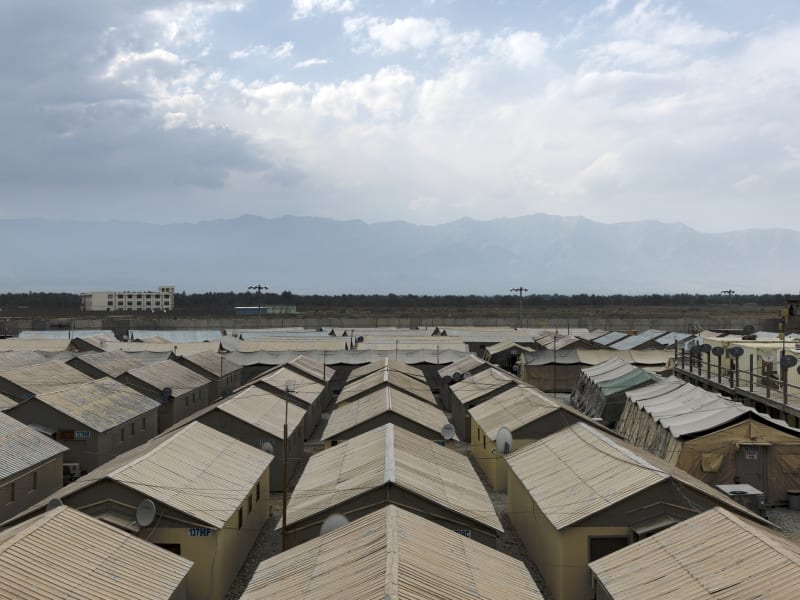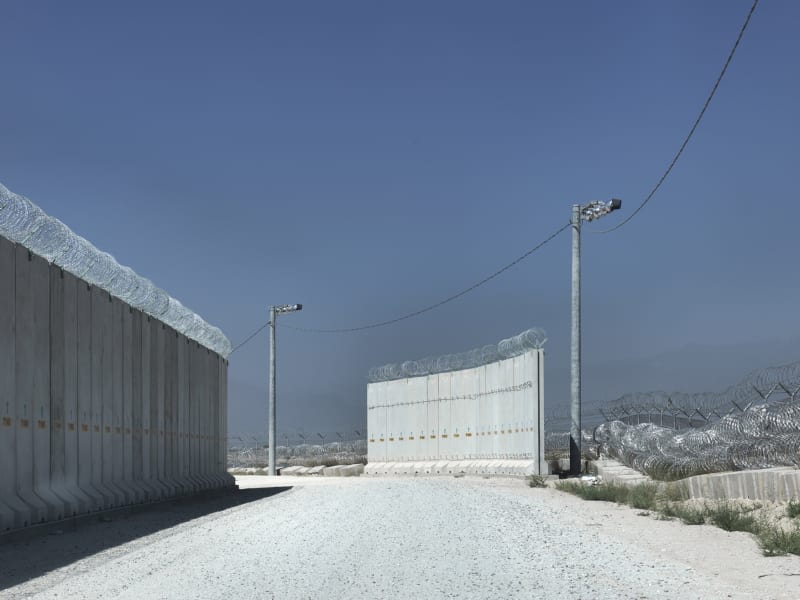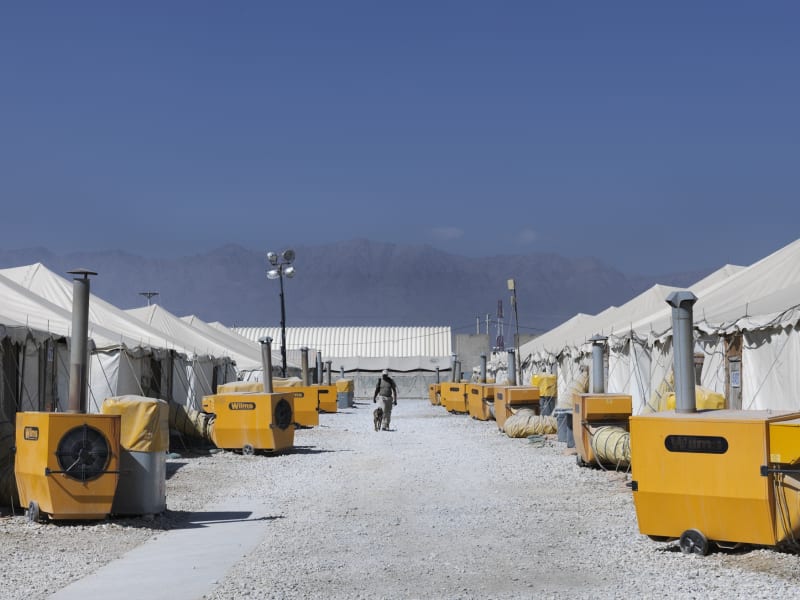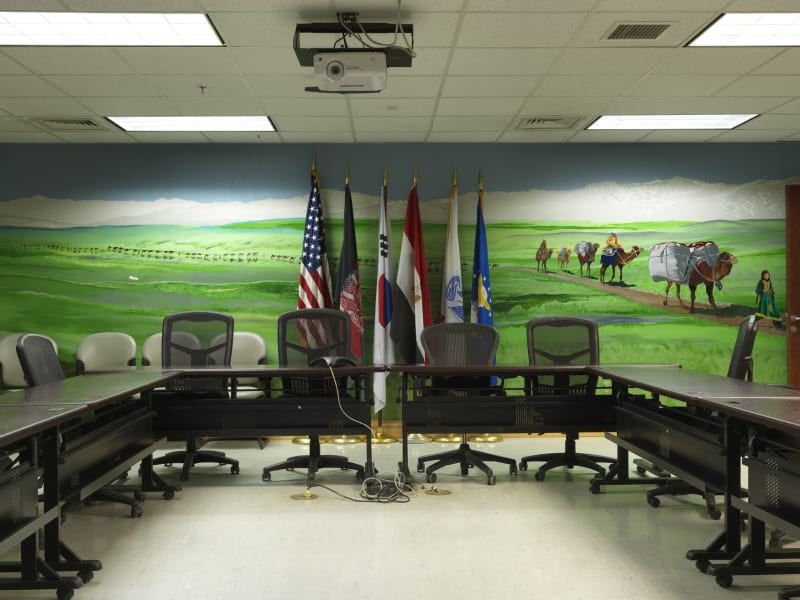Overview
The Mountains of Majeed is a reflection on the end of 'Operation Enduring Freedom' in Afghanistan through photography, found imagery and Taliban poetry. Edmund Clark examines the experience of the vast majority of military personnel and contractors who have serviced Enduring Freedom without ever engaging the enemy. He distils their war down to a concise series of photographs of the two views they have of Afghanistan: what they see of the country over the walls or through the wire of their bases, and what they see of pictorial representations within the enclaves that they never leave.
At Bagram Airfield, the largest American base in Afghanistan, and formerly home to 40,000, the view, both outside and inside, is dominated by the mountains of the Hindu Kush. Set against their looming presence, Clark's photographs from his time spent embedded with the U.S. military, expose the dystopian relationship between the man-made landscape of Bagram and the country beyond its walls.
Evoking the intangible, yet intensely felt presence of the mountains beyond, and the unseen insurgents they hide, Clark's quiet and contemplative images portray an alternative narrative to the one ordinarily presented by the media.
Clark's photographs capture the visual mirroring of the distant views within the base. Echoes of the surrounding landscape are found in the craters formed by construction work, peaks of refuse-strewn razor wire and the precisely ordered vistas of military tents.
Inside the buildings of the base, the landscape is simulated by murals and artworks, representing another view of Afghanistan. On the walls of a dining facility, a series of paintings signed by an artist named 'Majeed' project a romantic vision of its lush mountain passes and lakes. Reflecting on the significance of the paintings' location on an American base, Clark says:"How many tens of thousands of pairs of western eyes have registered the pastoral peace of these mountainscapes? Has anyone considered what they say of the country they are playing a part in occupying?"
In this exhibition, Majeed's paintings have been reproduced as a series of picture postcards. Likening them to mementos for souvenir hunters of an idealized touristic landscape, Clark's appropriation of the paintings offers a powerful reminder that the mountains remain out of Western reach.
"There is distance between these mountains. Vistas of tranquillity fabricated by hand from canvas, wood and paint. Images from an enclave captured in high resolution by the latest digital technology. Two cultures divided by landscape and time.
Ever present mountains forever beyond boots confined for a duration, within walls of occupation, on a ground of gravel and tarmac. And there is convergence. Both are mountains of the imagination. Both are representations of enduring freedom; and in both the mountains belong to Majeed." - Edmund Clark


















